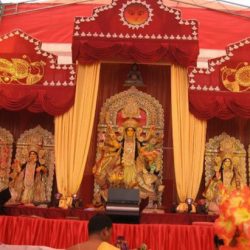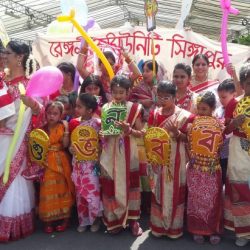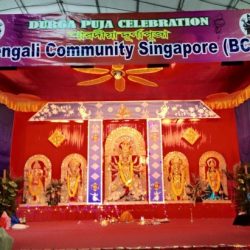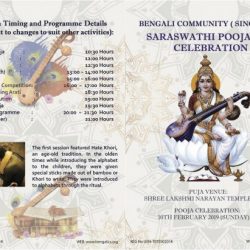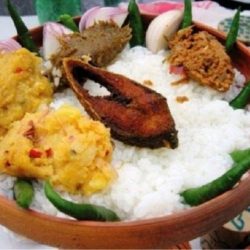Background
The Ramayana is an ancient Sanskrit epic which follows Prince Rama’s quest to rescue his beloved wife Sita from the clutches of Ravana with the help of an army of monkeys. It is traditionally attributed to the authorship of the sage Valmiki and dated to around 500 BCE to 100 BCE.
Comprising 24,000 verses in seven cantos, the epic contains the teachings of the very ancient Hindu sages. One of the most important literary works of ancient India, it has greatly influenced art and culture in the Indian subcontinent and South East Asia, with versions of the story also appearing in the Buddhist canon from a very early date. The story of Rama has constantly been retold in poetic and dramatic versions by some of India’s greatest writers and also in narrative sculptures on temple walls. It is one of the staples of later dramatic traditions, re-enacted in dance-dramas, village theatre, shadow-puppet theatre and the annual Ram-lila (Rama-play).
Origins
The original five books of an oral epic of local northern significance dealing with a hero and his exile, the abduction of his wife by a rival king and her rescue became conflated into seven books in which the hero Rama became an avatar of the god Vishnu, the scene shifted to encompass the whole of India, and the struggle to recover his wife became a metaphor for the final triumph of the righteous.
A brief summary of the Ramayana
Rama, prince of Ayodhya, won the hand of the beautiful princess Sita (seen here), but was exiled with her and his brother Laksmana for 14 years through the plotting of his stepmother. In the forest Sita was abducted by Ravana, and Rama gathered an army of monkeys and bears to search for her. The allies attacked Lanka, killed Ravana, and rescued Sita. In order to prove her chastity, Sita entered fire, but was vindicated by the gods and restored to her husband. After the couple’s triumphant return to Ayodhya, Rama’s righteous rule (Ram-raj) inaugurated a golden age for all mankind.
Characters of the Ramayana
Rama is the hero of the Ramayana epic, an incarnation of the God Vishnu. The eldest and favourite son of Dasaratha, King of Ayodhya, he is a virtuous prince and is much loved by the people. He is exiled from Ayodhya due to the plotting of his stepmother, Kaikeyi.
Sita is Rama’s wife and daughter of King Janaka of Mithila. Sita is the epitome of womanly purity and virtue.
Laksmana (seen here) is Rama’s younger brother. Completely loyal to Rama, he chooses to go with Rama and Sita when they are exiled from Ayodhya.
Ravana is the king of Lanka and has 10 heads and 20 arms. He received a boon from the God Brahma that he cannot be killed by gods, demons or by spirits, after performing a severe penance for 10,000 years. After receiving his reward from Brahma, Ravana began to lay waste to the earth and disturbed the deeds of the good Hindu sages. Vishnu incarnates as the human Rama to defeat him, assisted by an army of monkeys and bears, thus circumventing the boon given by Brahma.
Dasaratha is the King of Ayodhya, Rama’s father.
Kausalya is Rama’s mother, Dasaratha’s chief wife.
Kaikeyi is Dasaratha’s wife and Rama’s stepmother. She demands that Rama be banished to the forest and that her son Bharata be awarded the kingdom instead.
Bharata is the second son of Dasaratha. When he learns that his mother Kaikeyi had forced Rama into exile, causing Dasaratha to die broken hearted, he storms out of the palace and goes in search of Rama. When Rama refuses to return from his exile to assume the throne, Bharata obtains Rama’s sandals and places them on the throne as a gesture that Rama is the true king.
Sumitra is Dasharatha’s wife and mother of the twins Lakshmana and Satrughna.
Hanuman is the wise and resourceful monkey who helps Rama in his quest to defeat Ravana and rescue Sita.
Sugriva is the ruler of the monkey kingdom. His throne was taken by his brother Bali, but Rama helps him to defeat the usurper in return for his assistance in finding Sita.

